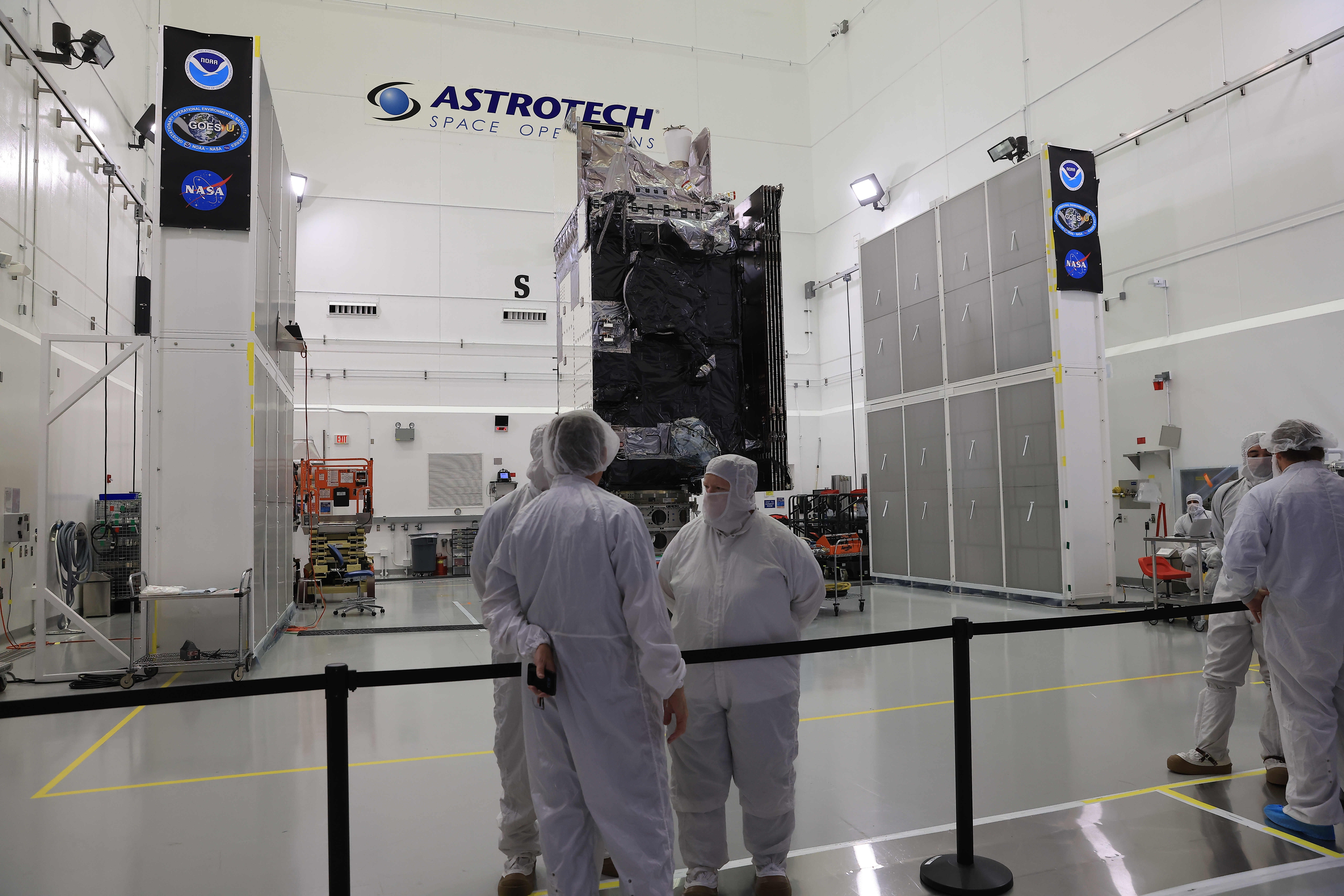

NASA hosted members of the media to view the National Oceanic and Atmospheric Administration (NOAA) Geostationary Operational Environmental Satellite U (GOES-U), on June 6, at the Astrotech Space Operations facility near the agency’s Kennedy Space Center in Florida.
Subject matter experts from NASA, NOAA, Lockheed Martin, and L3Harris Technologies provided a mission overview and answered questions about the satellite’s capabilities to assist meteorologists with predicting, observing, and tracking hazardous weather events on Earth and in space.
The opportunity provided media with a last look at the final weather-observing and environmental monitoring satellite in NOAA’s GOES-R Series before technicians prepare it for launch aboard a SpaceX Falcon Heavy rocket.
The satellite will carry a suite of instruments for advanced imagery, atmospheric measurements, real-time mapping of lightning activity, and detecting approaching space weather hazards. The satellite also includes a new compact coronagraph that will image the outer layer of the Sun’s atmosphere to detect and characterize coronal mass ejections.
The two-hour launch window for GOES-U opens at 5:16 p.m. EDT, Tuesday, June 25, from Launch Complex 39A at the Florida spaceport.

